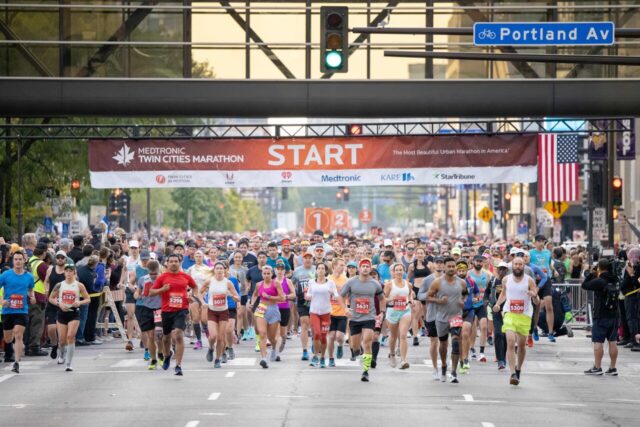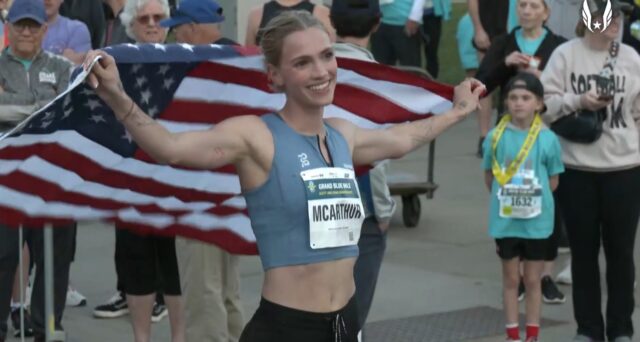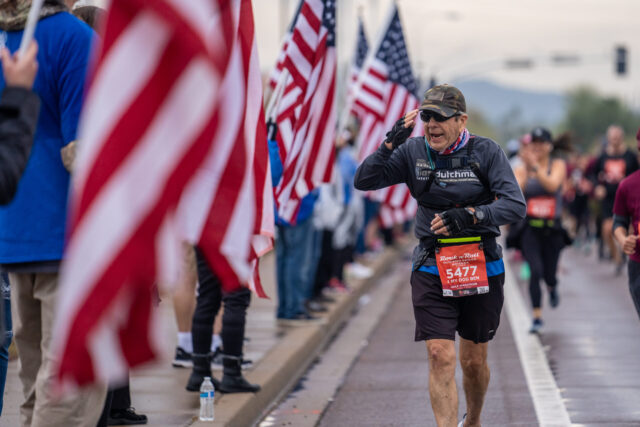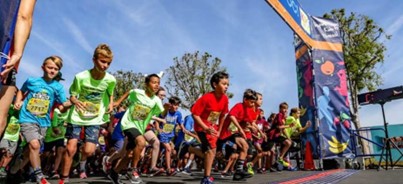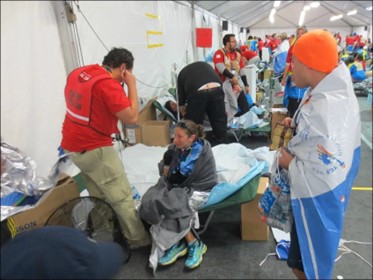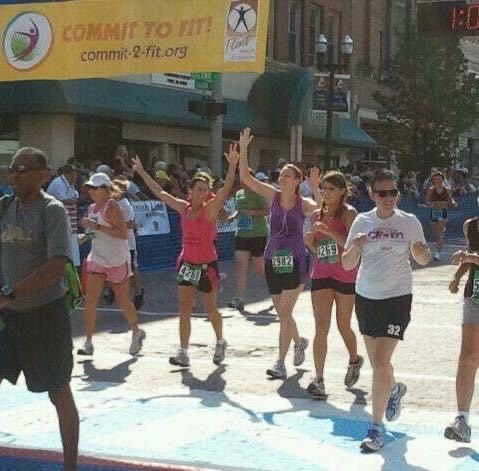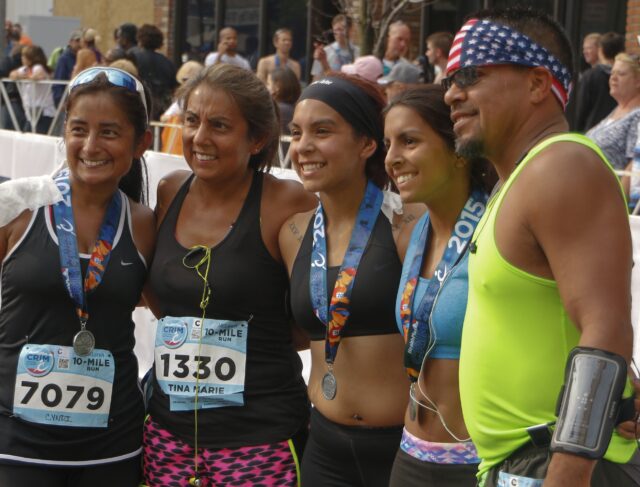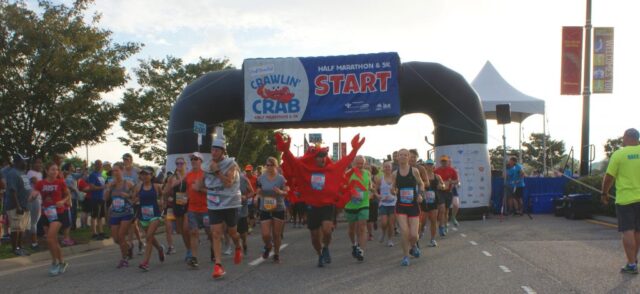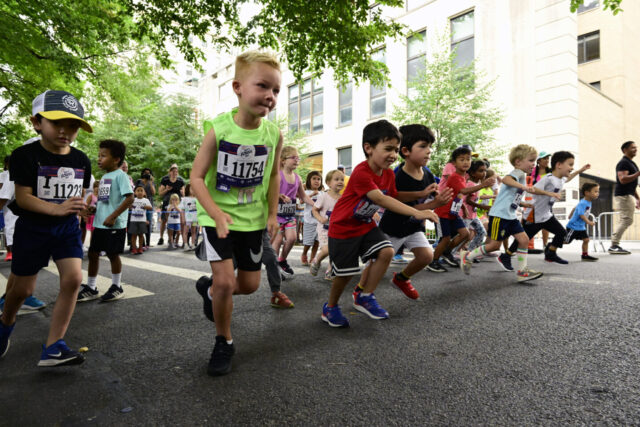Expanding Green Options: Event Merch and Sustainability
A few years ago, when Tash Acres was training for a half-marathon, she looked at the cheap medals and t-shirts from past races, saw how they piled up, and thought there had to be a better way. Her family was trying to eliminate waste in their lives and focus on their role in the environment, but she couldn’t find an event that didn’t add to the pile of stuff. Many avid runners have had a similar thought, staring at their stack of race memorabilia sitting in a corner or box.
Acres’ original project was to plant trees for every virtual race athletes ran, but “people still want something tangible,” she said.
And that’s how the concept of a plant-able medal was born.
At first, she just created the biodegradable medals for her own virtual challenges, but today Earth Runs delivers biodegradable medals with seeds embedded in them to other small races in the UK and Ireland, each one hand-made from partners at nonprofit organizations.
“I like medals. I’ve had medals in my time, but then I don’t know what to do with them after,” she said.
It’s a growing sentiment. With runners spending so much of their time outside, there’s an increasing concern about the impact that time is having on the outdoors. One study found that a marathon runner, on average, emits .7 tons of CO2 equivalent—with that number going past 4 tons if it involves a trans-oceanic flight to the race.
While there are entire fields of study devoted to creating sustainable best practices for events, the merchandise, trash, and stuff you hand out is one of the most visible pieces to runners—and one of the most frequently asked about.
A longtime industry vendor perspective
Leslie Jordan, Inc., a Certified Women’s Business Enterprise out of Portland, Oregon, is among the apparel manufacturers that have made efforts to diversify their products and offer green packing and shipping options.
“We offer all our moisture wicking polyester fabrics in a recycled option. Even our blend shirts (triblend, poly/rayon, poly/cotton) can be made with recycled poly material,’ shares Jena Bakkum, sales lead for LJI. “Our shipping boxes are made from recycled materials, with help from the ‘Sourcing for Sustainable Forestry Initiative.’ We discourage all poly bagging of apparel and use bulk folding. For fulfillment we use recycled shredded paper as filler instead of bubble wrap and recycled mailers whenever possible”
LJI has found that the most popular items in demand from participants are recycled shirts. But they come at a cost.
“Recycled options are more expensive so races may need to increase registration costs to balance the need and request for recycled shirts,” said Bakkum.
On the flip side of that equation, races may consider letting athletes opt out of certain swag items, rather than paying more.
“he trend we are seeing is making shirts and medals optional ‘for purchase,’ so there is little to no waste in manufacturing and landfill,” Bakkum noted.
Sustainable principles and tips for your next race
When it comes to considering the environmental impact of your race, the Council for Responsible Sport’s guide to hosting responsible events recommends going through your race and asking: Do we need this thing? Can we have less of this thing? Does it generate trash? Is there a more sustainable option? And how can we integrate sustainability into every aspect—for example, building compost plans into aid stations and eliminating trash in the expo, or making it part of vendor contract agreements?
When it comes to sustainability practices, said Aly Criscuolo, sustainability and corporate social responsibility director for the New York Road Runners, there are both behind-the-scenes things like switching to electric generators instead of gas, which can have a large impact but be unknown, and also highly visible things, like eliminating medals or moving to recycled medals, which can give runners a way to buy-in to the overall effort.
“We have to do both,” she said.
1. Reduce and reuse
“No matter how sustainable you make a produce, it’s not as sustainable as not buying something new,” said Criscuolo.
That’s why best practice s first to figure out how you can reduce overall materials. Anything that can be reused is ideal: Don’t put dates on signage or on t-shirts so they can be used in the future. Reusable water bottles, bib magnets instead of pins (if you can reuse them year after year) all helps.
Big caveat: If you invest in reusable cups or signage and then just throw it out the next year, that doesn’t do much good.
Many big races have also worked through their trash lifecycle to eliminate waste. For example, the Chicago Marathon tested separating plastic water bottles out for recycling, using compostable cups that could be gathered up after the race, and working with a company that could make composite board products from the foil heats sheets given to runners at the finish line.
The Council for Responsible Sport also recommends working with local vendors and vendors who already build sustainable practices into their business—partially because if you work with a local vendor who can print additional t-shirts, for example, on demand then you’re less likely to have extras wasted, and partially because local vendors eliminate the need for shipping and transport.
2. Give athletes options
You can also give athletes a simple box to check in the registration flow. They can opt out of a medal or t-shirt for a slight discount on their race entry—which could also save you money. Or you can partner with a nonprofit organization to allow them to donate the amount instead. NYRR partners with Mastercard to plant trees for those who opt out of the t-shirt or medal for their Mini 10K and have planted over 800 trees, said Criscuolo.
While there are ways to get creative encouraging carpooling and opting for virtual goodie bags, another simple popular option is allowing athletes to buy carbon offsets. The Cherry Blossom 10K in DC used to ask runners to donate the amount of a subway ride if they chose to drive instead of take the train, but then switched to a simple option for any runner to donate $5 to purchase carbon offsets and saw a large increase when they gave athletes that simple choice.
There are some things in race management that are avoidable, said Criscuolo, but traveling to the race isn’t. By definition, you want athletes to come to your race. This is where carbon offsets or donations can be useful.
3. Do your research
If you’re going to use carbon offsets, then verify that the company is certified, for example by Gold Standard, said Criscuolo. If you’re going to have a company plant trees, then make sure the organization will maintain those plantings, not just stick a tree in the ground and leave, she said.
There are many recycled and sustainable material merchandising options, such as sustainable fibers for t-shirts and wood or recycled metals for medals. NYRR uses recycled steel now, and many trail races have success with wood. But the best practice is using as much upcycling as possible—which means taking something that would be trash and putting it to a higher use. For example, some bike races will use old bike parts to make medals or integrate a cup into their medal. Or, you can use programs like Earth Runs or Trees Not Tees. Do the research for what makes sense for your event.
All of this can be a little confusing, of course, which is why Criscuolo recommends reaching out to organizations and experts, like the Council for Responsible Sport or the Green Sport Alliance. They’re often happy to help or think through your plans. One of the most common mistakes she sees race directors or event organizers make is to do something quick that they hope is more sustainable, but it actually isn’t, like trying to compost stuff that isn’t compostable or not knowing if recycling is really the best option in their local trash system. “There are lots of resources and people who want to help,” she said. Use them.
4. Communicate with your runners
Many race directors are worried that if they eliminate medals or t-shirts, athletes will think they’re being cheap and not sign up. The key, said Criscuolo, is communicating. If you’re going to opt for wood or recycled medals, or run cup-free aid stations, then make sure you’re clear with your runners about why you’re doing it.
“Runners still want quality,” said Criscuolo, but if the quality is there and they know why you’re making the change, then studies show they will pick the more sustainable option.
